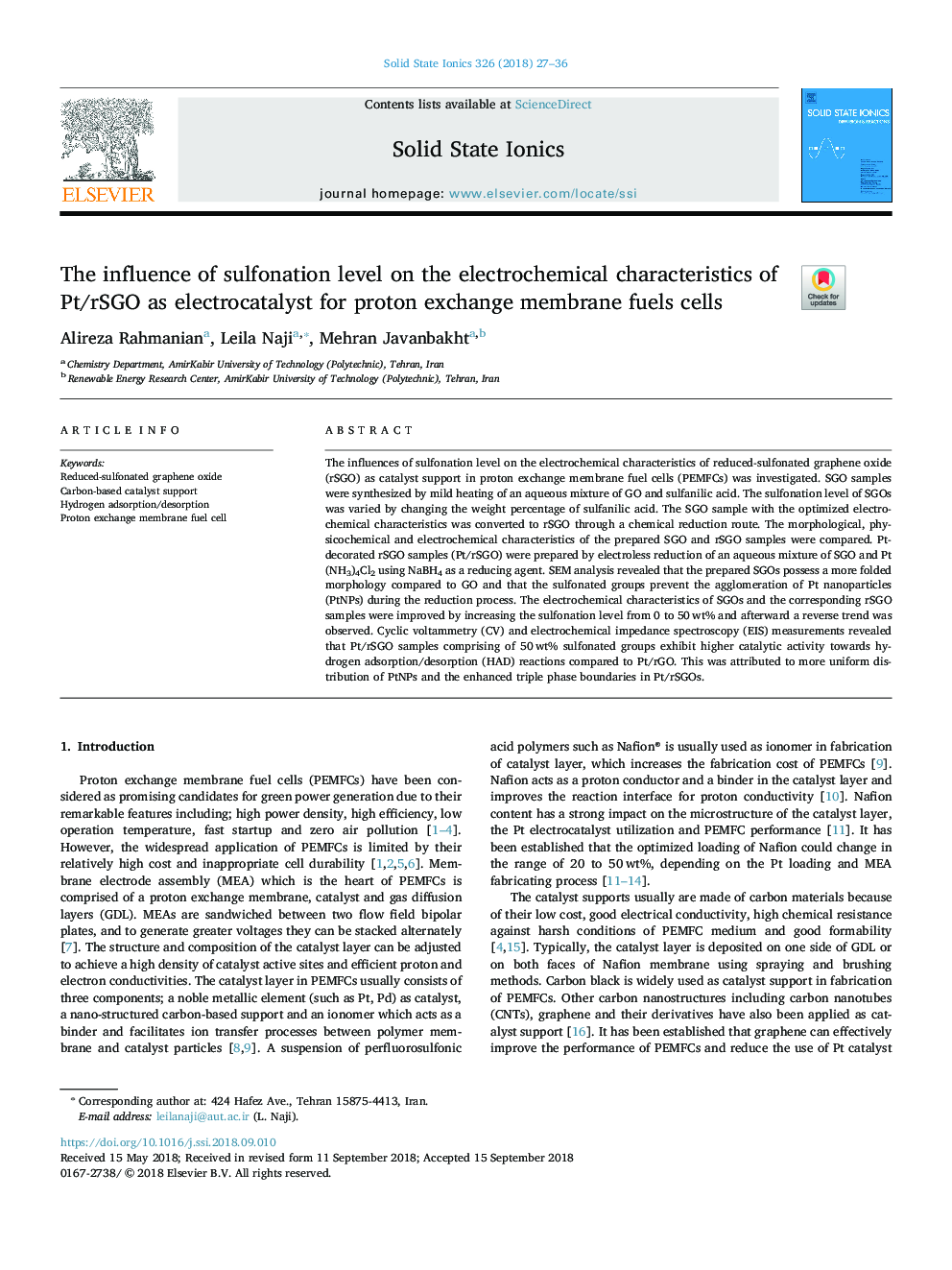| Article ID | Journal | Published Year | Pages | File Type |
|---|---|---|---|---|
| 10154731 | Solid State Ionics | 2018 | 10 Pages |
Abstract
The influences of sulfonation level on the electrochemical characteristics of reduced-sulfonated graphene oxide (rSGO) as catalyst support in proton exchange membrane fuel cells (PEMFCs) was investigated. SGO samples were synthesized by mild heating of an aqueous mixture of GO and sulfanilic acid. The sulfonation level of SGOs was varied by changing the weight percentage of sulfanilic acid. The SGO sample with the optimized electrochemical characteristics was converted to rSGO through a chemical reduction route. The morphological, physicochemical and electrochemical characteristics of the prepared SGO and rSGO samples were compared. Pt-decorated rSGO samples (Pt/rSGO) were prepared by electroless reduction of an aqueous mixture of SGO and Pt(NH3)4Cl2 using NaBH4 as a reducing agent. SEM analysis revealed that the prepared SGOs possess a more folded morphology compared to GO and that the sulfonated groups prevent the agglomeration of Pt nanoparticles (PtNPs) during the reduction process. The electrochemical characteristics of SGOs and the corresponding rSGO samples were improved by increasing the sulfonation level from 0 to 50â¯wt% and afterward a reverse trend was observed. Cyclic voltammetry (CV) and electrochemical impedance spectroscopy (EIS) measurements revealed that Pt/rSGO samples comprising of 50â¯wt% sulfonated groups exhibit higher catalytic activity towards hydrogen adsorption/desorption (HAD) reactions compared to Pt/rGO. This was attributed to more uniform distribution of PtNPs and the enhanced triple phase boundaries in Pt/rSGOs.
Related Topics
Physical Sciences and Engineering
Chemistry
Electrochemistry
Authors
Alireza Rahmanian, Leila Naji, Mehran Javanbakht,
